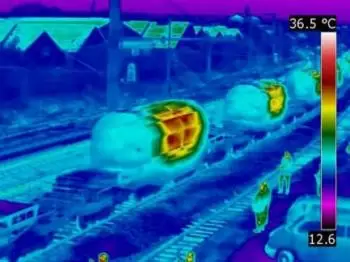
The nuclear power industry generates nuclear waste that must be adequately treated. Therefore, radioactive waste must be transported in specialized storage centers.
The transport of radioactive material should minimize the odds of a nuclear accident occurring. In an accident, the objective is to mitigate its effects, avoid the dispersion of radioactive material, and avoid possible impacts on human health.
For the transport of waste originating from nuclear reactors, such as nuclear power plants, they use 40-ton vehicles. In atomic waste from hospitals, laboratories, and research centers, they use smaller vehicles.
Who are the official authorities responsible for nuclear waste transport?
According to the recommendations established by the International Atomic Energy Agency (IAEA), materials transportation is carried out. The European Agreement for the Transport of Dangerous Goods by Road is who makes these recommendations.
The Nuclear Regulatory Commission (NRC) and the Department of transportation are regulatory authorities in the US over the storage and disposal of nuclear wastes in the United States. They are also in charge of transporting spent nuclear fuel and high-level wastes generated by the Department of Energy.
The NRC regulates spent fuel transportation through a combination of:
-
safety and security requirements
-
certification of transportation casks
-
inspections
-
system of monitoring to ensure that requirements are being met
What are the dangers of transporting nuclear waste?
The risk during the transport of radioactive materials includes threats to human health and nuclear safety. These two concepts can occur due to the exposure of workers and others to radioactive sources that come from spent fuel assemblies from nuclear power plants and high-level radioactive waste.
Within the nuclear safety aspects, we also include social risks and people's perceptions. These aspects can occur even without radiation exposure.
The hazards of transporting nuclear waste are regular vehicle accidents and exposure to ionizing radiation in accidents and under normal conditions. We must avoid the release of radioactive particles.
These hazards are a constant source of concern for people living near common routes from nuclear facilities to centralized temporary storage.
The risk in transport takes into account the chances of a specific incident occurring and its consequences. In general, several scenarios are considered to make a security plan.
How do we classify nuclear waste?
Waste management deals with all types of waste. Radioactive waste can be classified for management reasons as:
-
Declassifiable (or exempt) waste: They do not have radioactivity that could be dangerous to human health or the environment, in the present or for future generations. They can be used as conventional materials.
-
Low activity waste: they have gamma or beta radioactivity at levels in these cases: less than 0.04 G Bq / m³ if they are liquid, 0.00004 GBq / m³ if they are gaseous, or the contact dose rate is less than 20 m Sv / h if they are solid. We only consider this category if, in addition, their half-life is less than 30 years. They should be stored in surface storage.
-
Medium level waste: they have gamma or beta radioactivity. Their levels are higher than low-level waste but lower than 4 GBq / m³ for liquids, gaseous with any activity or solids whose contact dose rate exceeds 20 mSv / h. Like low-level waste, only waste with a half-life of fewer than 30 years can be considered in this category. They should be stored in surface storage.
-
High activity or high half-life waste: all those materials emitting alpha radioactivity and those materials that emit beta or gamma rays that exceed the levels imposed by the limits for medium-level waste belong to this category. Also, all those whose half-life exceeds 30 years (for example, minority actinides ) must be stored in deep geological storage. They are considered highly radioactive.
Types of packaging for the transport of nuclear waste
Depending on their activity, their physical form, their radioactive content, and the type of packaging, there are five types of packages:
-
Excepted packages: Excepted packages contain quantities of radioactive material small enough to be exempt from most design and use requirements. However, they must be correctly labeled to identify their radioactive content as in other types of packages.
-
Industrial packages: industrial packages are used to transport materials of low radioactivity or stained on the surface.
-
Type A packages: Type A packages are designed to safely transport relatively small quantities of radioactive materials and/or low-intensity radioactive sources. In this type, the maximum amounts of radionuclides that can be transported are limited. In case of a leakage, the risks are low.
-
Type B packages: Type B packages are used to transport larger quantities of material, such as spent nuclear fuel, vitrified waste, and similar highly radioactive materials. These bags are designed to withstand the effects of severe nuclear accidents.
How should radioactive packages be labeled for transport?
Regarding the labeling of packages, three categories are distinguished:
|
Category |
radiation at the surface of the package |
|
I - White |
until 0.005 millisieverts per hour (mSv / h) |
|
II - Yellow |
between 0.005 and 0.5 millisieverts per hour (mSv / h) |
|
III - Yellow |
between 0.5 and 2 millisieverts per hour (mSv / h) |